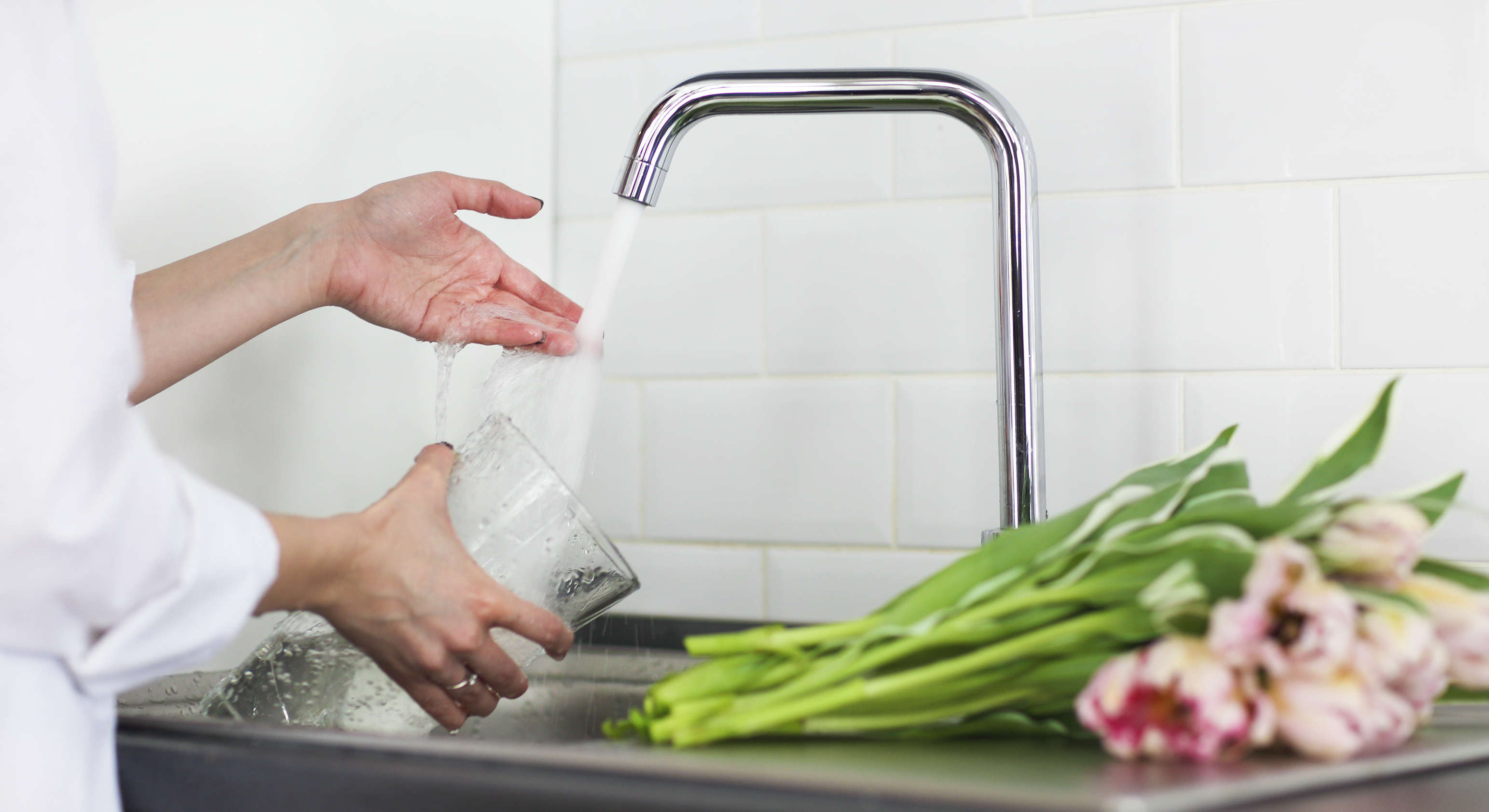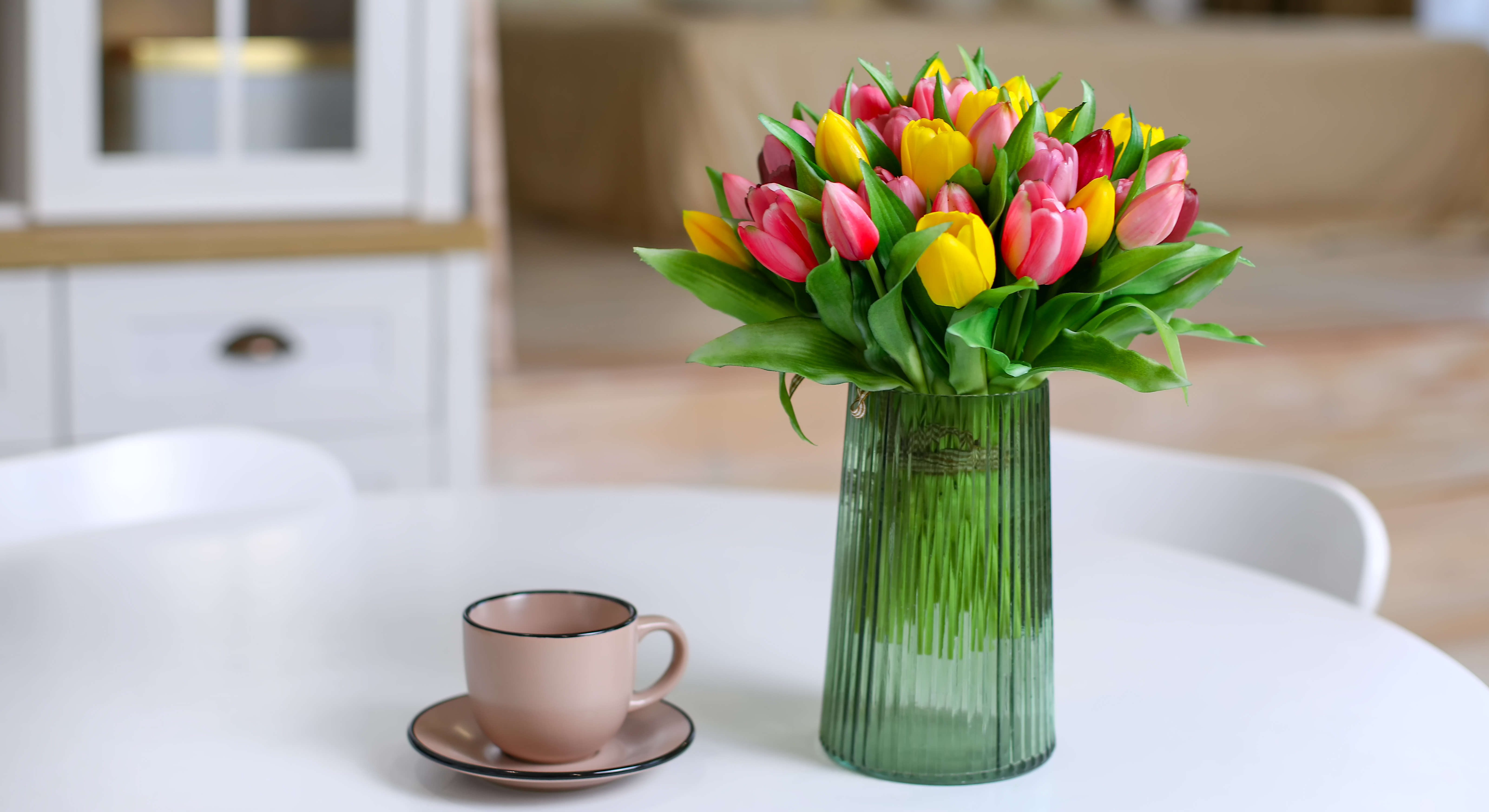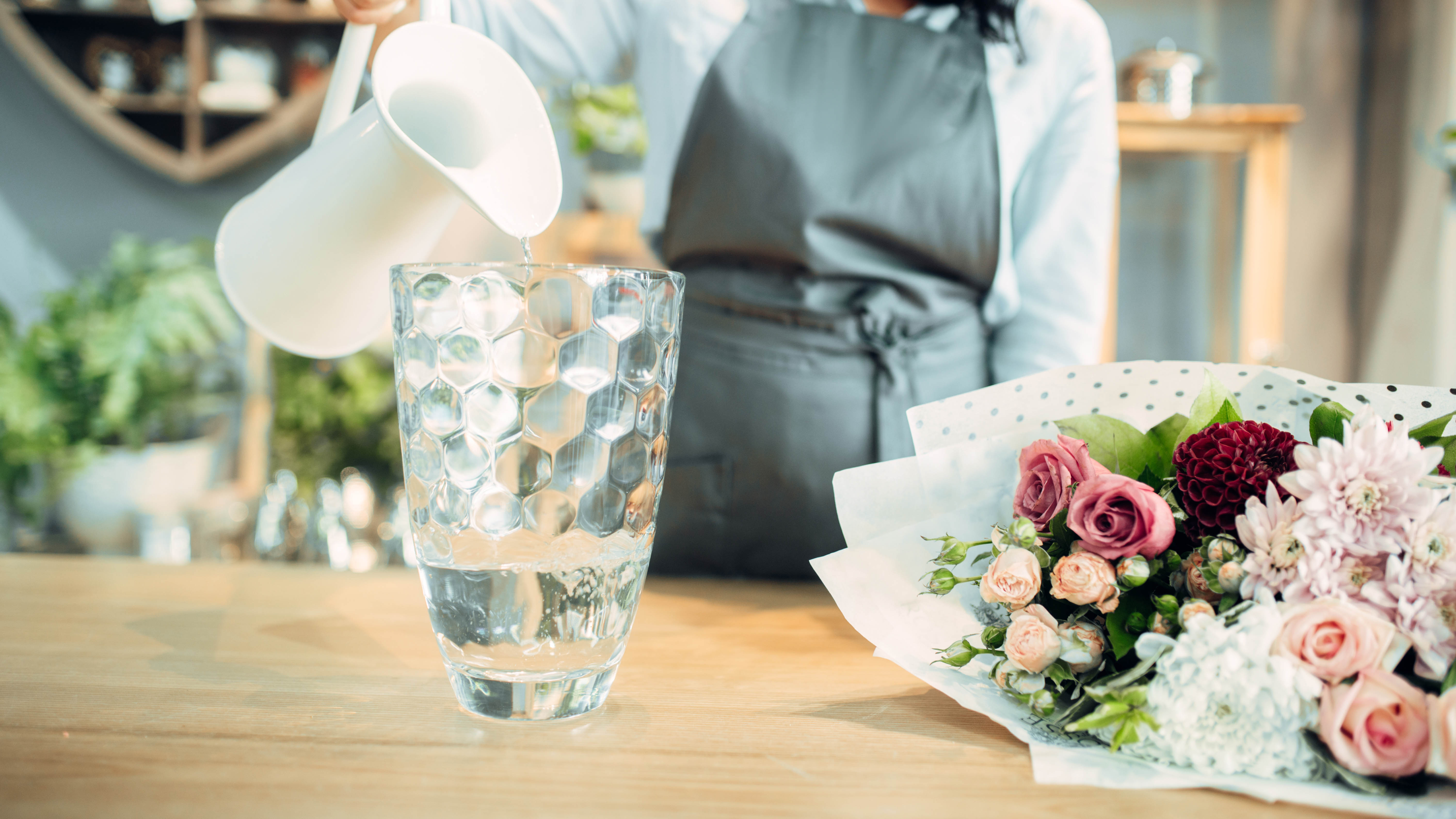7 ways to keep your Mother's Day flowers fresh and long lasting — expert tips

Mother's Day is here, and a bouquet of flowers is a popular choice of gift for the special women in our lives. But while pretty florals can instantly brighten up a room, it’s always a shame once they start to wilt or the leaves go brown after a few days.
Luckily, there are some useful tips to ensure your cut flowers will stay fresh for longer — with the right care. In fact, the key is all about preventing bacteria from growing, which will speed up its demise.
We asked a gardening expert to share their top tips on how to make your Mother’s Day flowers last and stay fresh for as long as possible.
1. Choose a variety known to last longer

The first thing to check is whether the variety of flowers you're buying are known to be naturally long-lasting.
“For those buying a cut bouquet this Mother’s Day, one of the easiest ways to ensure the longevity of your flowers is to opt for a naturally long-lasting variety,” says Julian de Bosdari, CEO of plant nursery Ashridge. “Chrysanthemums, carnations and orchids are more durable varieties that can survive for several weeks and enable your loved one to enjoy their bouquet for longer.
On the other hand, more delicate varieties, such as tulips and peonies, have a vase life of around five days, and are likely to wilt much more quickly.”
If you love orchids, but struggle to keep them alive, check out how to care for an orchid and make it thrive all year long. Plus, did you know that you can get an orchid to rebloom in 6 easy steps?
Get instant access to breaking news, the hottest reviews, great deals and helpful tips.
2. Make sure you use a clean glass vase

This might sound like common sense, but the state and quality of your vase can make all the difference.
“The very first thing you should do with your bouquet is make sure you have a clean vase to place them in. Vases with narrow openings are typically harder to clean and are prone to trapping bacteria, which can contaminate the water and cause flowers to age and decompose quicker, so aim to use a vase with a wide opening if possible.”
In addition, the best vases to use are typically glass or ceramic, as plastic tends to encourage bacteria growth. This will lead to your beautiful flowers wilting faster. “Try to avoid using a plastic vase, as the porous material is more likely to harbor bacteria. Glass and ceramic vases make for better options, as they are not only easier to clean, but will also elevate the look of your bouquet.”
3. Trim stems at an angle

Another essential tip to make your fresh flowers last longer is to always trim stems at an angle. This allows the flowers to absorb more water, and keep hydrated for a longer period of time.
“Cut flower bouquets have their stems pre-cut but they are likely to have closed up by the time you purchase them. Therefore, it’s important to trim half an inch off each stem at a 45-degree angle using a clean knife or pair of sharp scissors before setting your flowers in a vase.”
“Cutting the stems diagonally maximizes the surface area for water absorption, allowing your flowers to stay more hydrated. Make sure to trim the stems of your flowers every couple of days to allow flowers the best chance of absorbing water.”
You can also trim stems using one of the best pruning shears — just remember to learn how to sharpen pruning shears.
4. Remove flower foliage below the water line

Similarly, you’ll need to prune any foliage that is submerged under the water. This will prevent a build-up of bacteria, and keep your flowers fresh.
“Any leaves or petals submerged in vase water should be removed as they can promote bacterial growth. Bacteria can clog the stems, which obstructs water absorption and shortens the lifespan of your flowers. You can keep any healthy foliage that is above the water line, to preserve your bouquet and make it look as full as possible.”
5. Keep out of direct sun and away from fruit

Whether you wish to place your vase on a sunny windowsill or in the kitchen, be sure to keep your fresh flowers away from direct sunlight, and your fruit bowl! These things can reduce the lifespan of your floral display, causing it to qujickly wilt or lose petals.
“Flowers should be kept away from direct sunlight and heat sources as these can cause wilting. Direct sun and heat also prompt buds to bloom quicker, shortening the bouquet’s lifespan. It’s best to place your flowers in a cooler environment with plenty of indirect light rather than directly within the sun’s rays or near a radiator.”
“Make sure to also keep flowers away from the fruit bowl, as ripening fruit such as bananas and apples produce an odorless gas called ethylene, which causes flowers to age and drop petals more quickly.”
Also, if you want your home to smell fresh all day, check out these 7 fragrant flowers to make your house smell amazing.
6. Don’t forget to change water regularly

Alongside keeping your fresh flowers out of direct sunlight, remember to replace its water often. A good sign is if your clear vase is notably cloudy or has leaves in it.
“Make sure the water in your vase is clean and change it often to remove any bacteria. This should be done every two days, but you can also do it daily, especially for more delicate varieties. If the vase water is visibly cloudy or has debris in it, this is a sign that it needs replacing with fresh water.”
On another note, if you’re a plant parent and think you might have watered too much, check out these 5 tips to save an overwatered plant.
7. Nourish flowers with food

Finally, your fresh flowers could do with some nourishment to keep it healthy and perky. Feed it with liquid flower food to extend its lifespan.
“You often get a small sachet of liquid flower food with your bouquet, so make sure to add this to the water when you first put them in a vase. To extend the bouquet’s shelf life, aim to add additional flower food each time that you replace the water.
If you can’t get your hands on proper flower food, don’t fret. You can make a homemade solution by adding two tablespoons of sugar and two tablespoons of white vinegar to one liter of lukewarm water.”
“The sugar provides energy to nourish the flowers, while the white vinegar lowers the water’s pH, which improves water absorption and helps to remove bacteria from the water due to its antimicrobial properties.”
More from Tom's Guide
- Also, here’s how to keep your cut tulips fresh for longer — try these 5 top tips
- Discover how to care for an orchid and make it thrive all year long
- Find 7 indoor plants that will make your house smell nicer

As the Homes Content Editor, Cynthia Lawrence covers all things homes, interior decorating, and garden-related. She has a wealth of editorial experience testing the latest, ‘must-have’ home appliances, writing buying guides and the handy ‘how to’ features.
Her work has been published in various titles including, T3, Top Ten Reviews, Ideal Home, Real Homes, Livingetc. and House Beautiful, amongst many.
With a rather unhealthy obsession for all things homes and interiors, she also has an interior design blog for style inspiration and savvy storage solutions (get rid of that clutter!). When she’s not testing cool products, she’ll be searching online for more decor ideas to spruce up her family home or looking for a great bargain!
